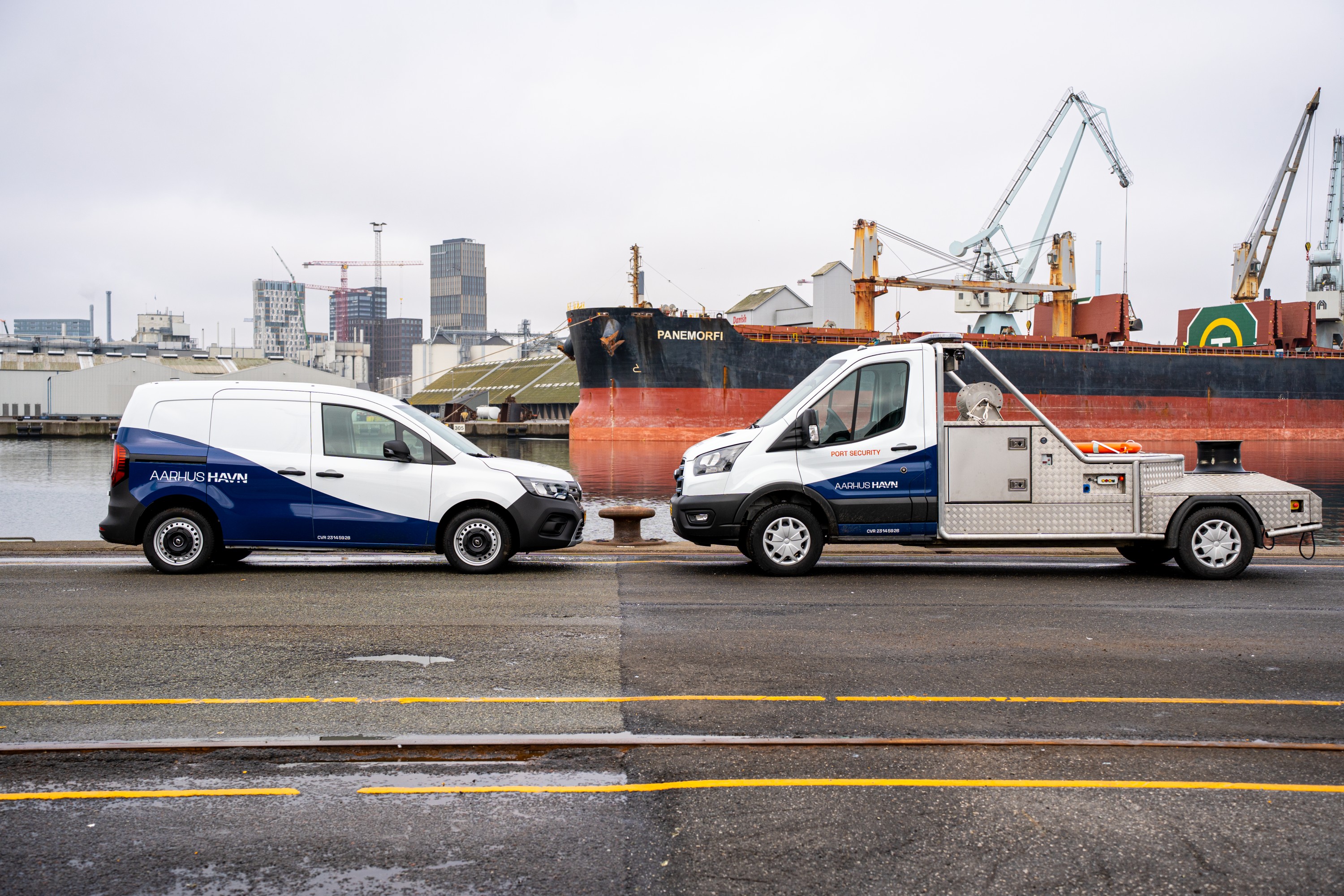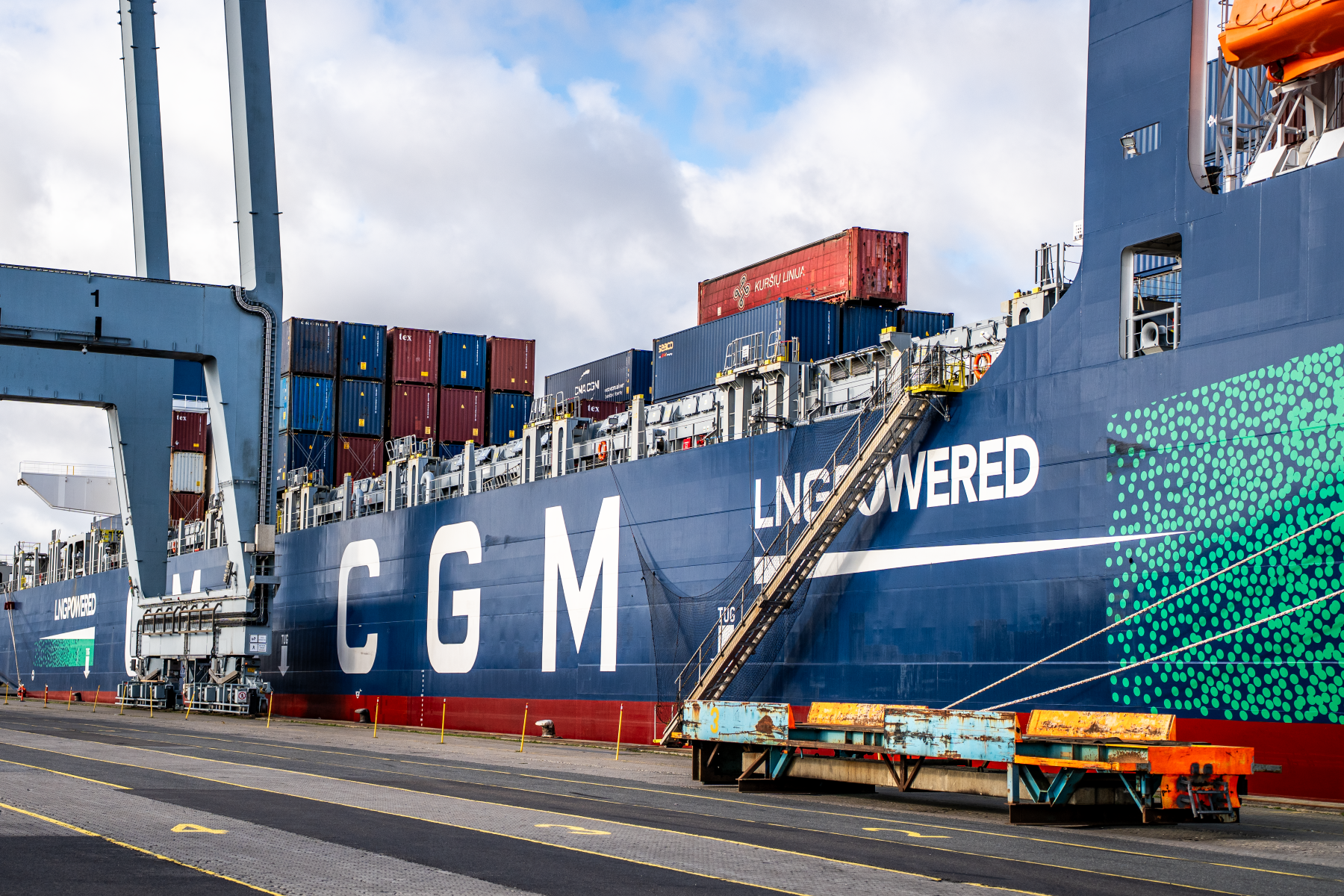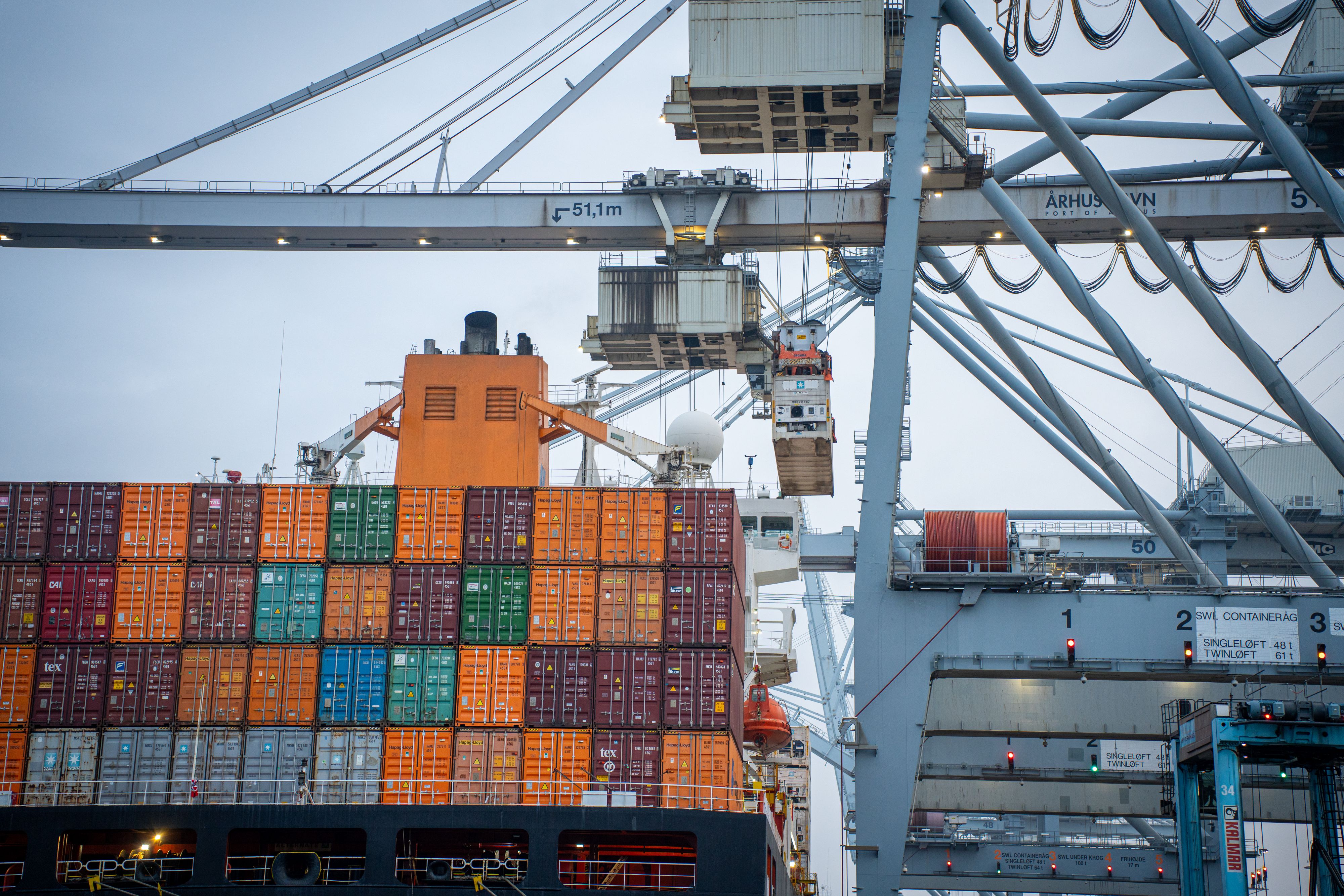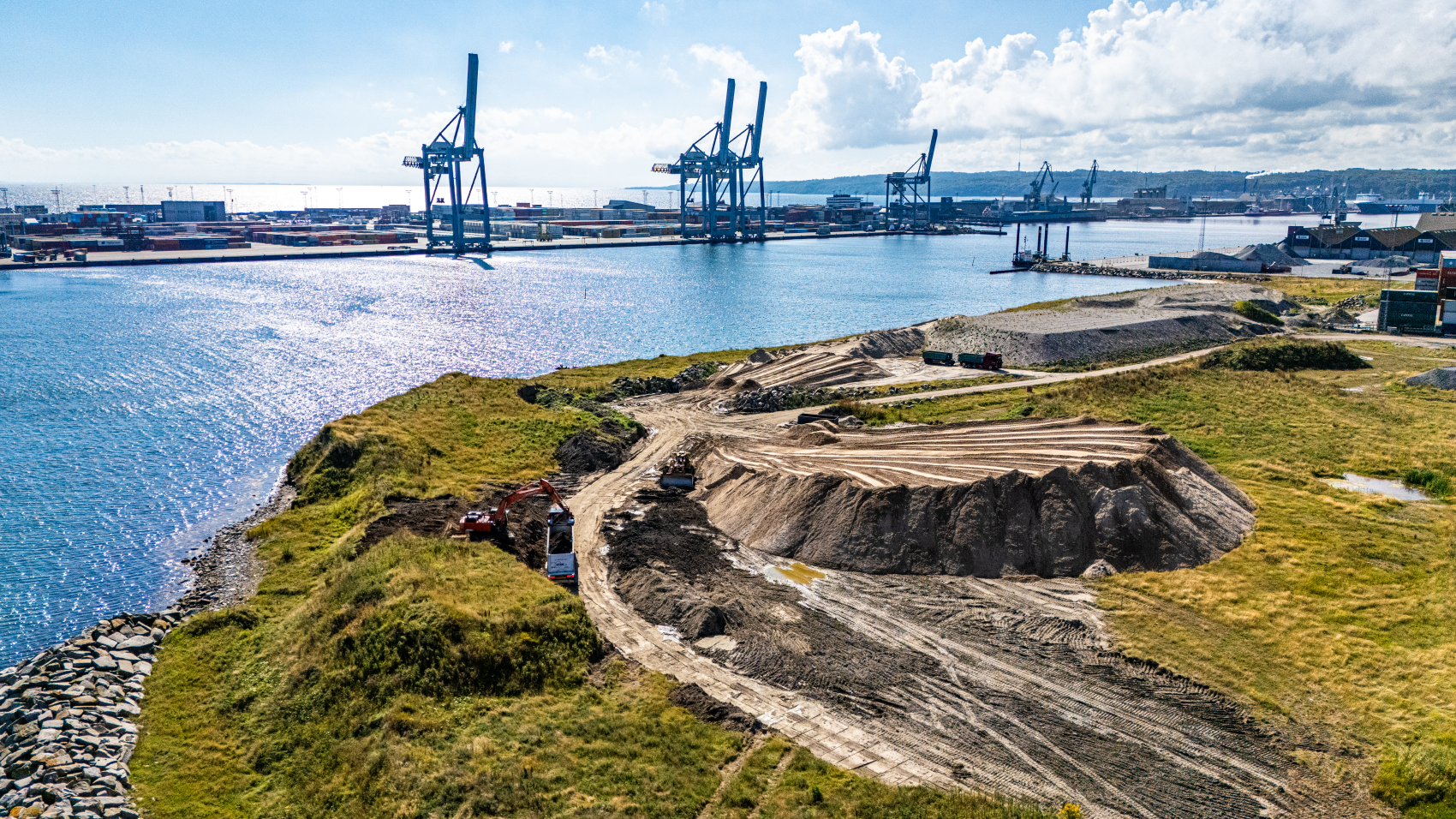20/10/2025
The Port of Aarhus enters crucial phase on the road to CO2 neutrality
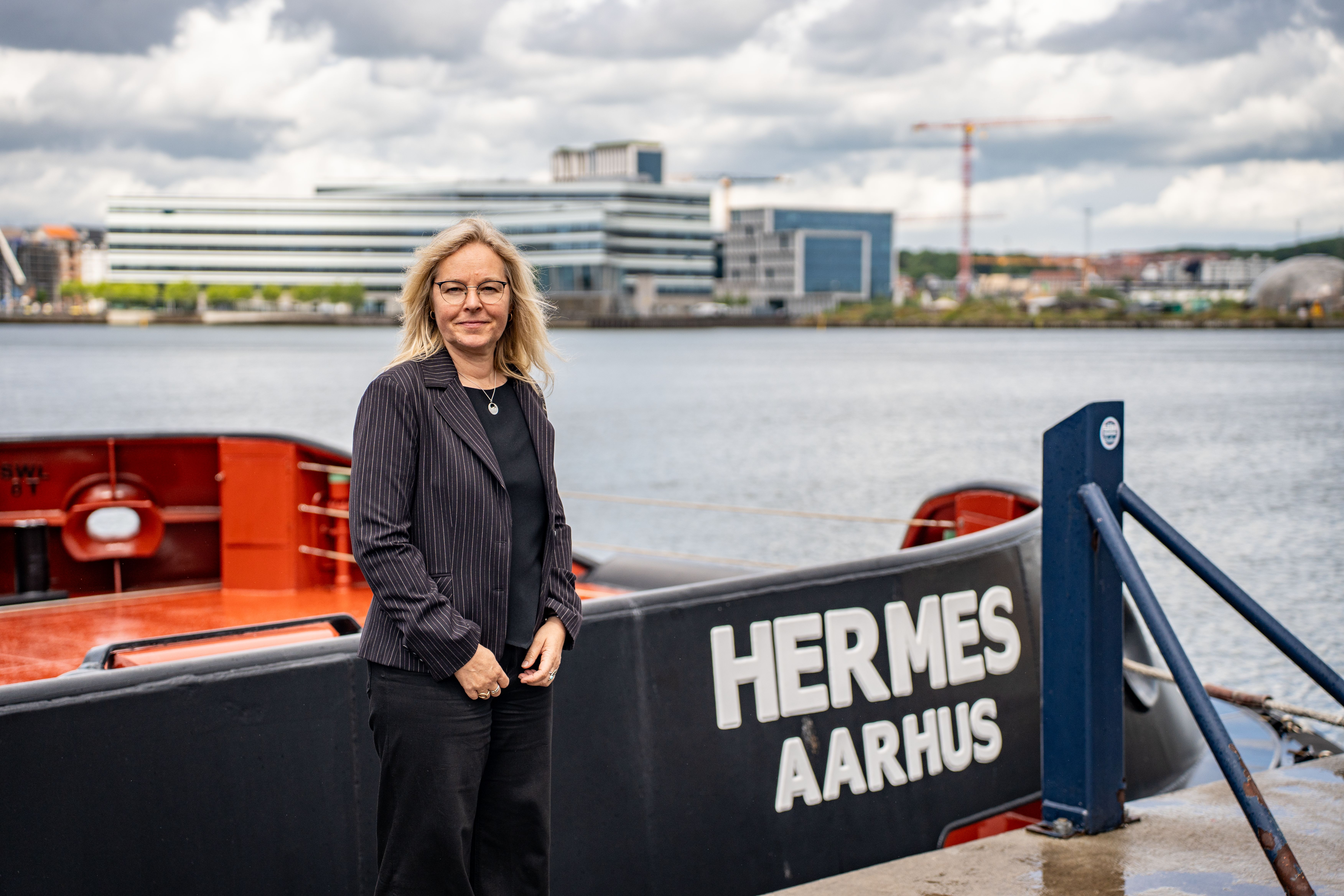
The Port of Aarhus is still one of the only ports worldwide to be part of the UN partnership Science Based Targets Initiative (SBTi).
This means that the port's goal and path towards CO2 neutrality in own operations has been validated as realistic, science-based and consistent with the Paris Agreement climate goals.
We will be CO2 neutral in our own operations by 2030. We do so because from the start we have stuck to the SBTI validated plan and we know what is required of us to reach the goal. This is not to say that it will be easy or without dilemmas, because we have always recognized that it is the end of the plan that is most challenging, says Anne Zachariassen, COO at the Port of Aarhus.
Dependent on the development of technology
The port has so far implemented a number of actions. For example, almost all vehicles are electric — the last three will be replaced over the next two years. And from this year, the Port of Aarhus will receive 100 percent green electricity for its operations. This means that the CO2 emissions is reduced by 65 percent by 2026.
The plan has now come to the main challenge to achieve the goal — the port's two tug boats. Becasuse the electrification of tugboats is still at a very early stage.
With only two tug boats, we don't have the flexibility to test untested boats. This is a dilemma, because we want to move quickly, but also not so fast that we as a critical infrastructure cannot provide the security of supply to Danes and the business community that we guarantee, says Anne Zachariassen and continues:
A few of Europe's largest ports are testing electric tug boats, which we are following closely. One option is to settle for one electric tug boat and convert the other to biofuel until we are sure that the electric boats are reliable. In the long term, we would rather have two on electricity, but we must have made a decision by 2026 — without compromising security of supply, says Anne Zachariassen.
The port faces the same dilemma with the construction machinery, says Anne Zachariassen. A replacement now will be risky investments because development is still at an early stage.

Together in the green transition
When the Port of Aarhus in 2030 is CO2 neutral, the Port of Aarhus' so-called Scope 3 is not part of the accounting in the of CO2 neutrality, although the port reports on Scope 3.
The largest source of CO2 in this category is construction work. Here, close cooperation with suppliers is carried out on the climate impact, and so-called shadow prices are used in the port's tenders, so that low-emission offers can become economically attractive.
In addition, the Port of Aarhus is trying to contribute to the green transition of the other companies at the port in order to lower the overall climate footprint of the port area. For example, with the investments in onshore power facilities for cruise ships and soon also for container ships.
There are about 200 companies running their businesses at the port area. They are independent companies with their own climate ambitions. So are the shipping companies that call at our port. We can't control how they do business and therefore we also don't have control over how they work lowering their emissions. Therefore, we are also very happy to see that the other companies at the port are doing a lot of good things to reduce the climate footprint, says Anne Zachariassen and continues:
For even though our CO2 neutrality in itself is a big step, it's not enough in the big picture. We are therefore constantly working to ensure that our facilities and services help the companies achieve their climate goals, so that together we make a difference in the green transition, says Anne Zachariassen.
The Port of Aarhus set the goal of CO2 neutrality back in 2020, based on a baseline in 2018, when the Port of Aarhus emitted 2,046 tonnes of CO2E in its own operations. By 2024, it had reduced by 559 tons, representing an overall reduction of 32 percent.

